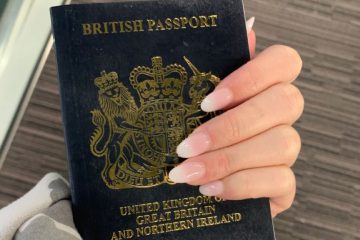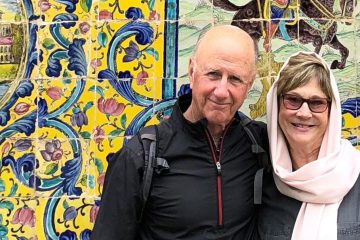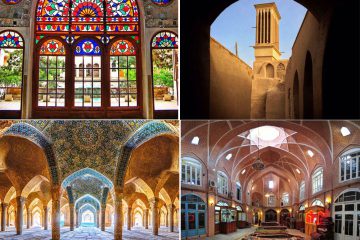
Things to Know Before Traveling to Iran
Things to Know Before Traveling to Iran:
You want to know all about Iran? As a country located in the Middle East has always played a significant role in connecting east to the west. Middle East is always known as the cradle of civilizations and Abrahamic religions.
Iran is the 17th largest country in terms of Area with the approximate area of 1.65 million square kms. Iran is surrounded by the largest lake in the world (Caspian Sea), Persian Gulf, the Gulf of Oman and seven neighbor countries. Iran neighbor countries are Pakistan and Afghanistan in the east, Turkmenistan in the north east, Armenia, Azerbaijan and Turkey in the North West and Iraq in the west.
Iran is a must see and Muslim country which has 80 million people. It has the largest population of Shi’a Muslims in the world (almost 85 percent of the population). The minorities are Sunni Muslims, Christians, Jews and Zoroastrians.
Tehran is the capital, largest city and leading economic and cultural center. The other big cities in Iran are Mashhad, Isfahan, karaj, Shiraz and Tabriz.

The country has a great diversity of ethnic groups. The largest ones are Persians, Turks, Kurds, Arabs, Turkmens, etc. Nomads are another part of our society with a population of a million. They are still living like their ancestors. Most of them are living in the south west and northwest of Iran. In the summer time they move to nearby the mountains which is cool. While in winter they move to the lower areas like plains. The most famous nomads are Qashqai, Bakhtiari and Shahsavan.
Most of the people in the world know Iran with Persian rug and Persian cat. But Iran has many other things to be known as well. The most famous ones are Caviar, Saffron, Pistachios and Turquoise. Indeed, Iran plays a very vital role in the Middle East as it has one of the largest deposit of oil and gas.
The history of Iran dates back to 5000 BC. Susa is the remnants of that period. Around 1000 BC, Aryans immigrated to the plateau of Iran and settled in the southwest, northwest and northeast of the plateau. The current name of Iran has roots in the former region that Arians were living, called “Iranvij”. From these immigrants Cyrus the Great established the first empire in the world in 550 BC.
Echoes of ancient civilization resonate down through the ages in Iran. Some of history’s biggest names – Cyrus and Darius, Alexander the Great, Genghiz Khan – all left their mark in Iran and the cities they conquered.
The soul of Iran is reflected in the every single site you visit in this country. Persepolis as the ancient ceremonial capital mesmerizes any visitors. Experiencing the remote power of Susa and the immense Elimite Ziggurat at T-Choqa zanbil will amaze everyone. Walking through the maze-like allies in the old city of Yazd would be really joyful even if you get lost in the labyrinths. All this places will carry you all the way back to the glory days of ancient Persia.
From these 7000 years of history and civilization, many significant cities, sites and artifacts were remained. Most of them are depicted in the famous museums in the world like Louvre, Hermitage, Metropolitan, Victoria & Albert, British museum and etc. This heritage has made Iran a very distinct destination in the Middle East.

Among all these glorious cities and sites, UNESCO has recognized 24 of them as the World Heritage Sites. Here is the list of Iran’s UNESCO World Heritage Sites:
- “Tchogha Zanbil“, Khuzestan province, 1979
- “Persepolis”, Fars province, 1979
- “Meidan Emam” (Naqsh-e Jahan square), Esfahan province, 1979
- “Takht-e Soleyman”, West Azerbaijan, 2003
- “Bam and its cultural landscape”, Kerman province, 2004
- “Pasargadae”, Fars province, 2004
- “Soltaniyeh”, Zanjan province, 2005
- “Bisotun”, Kermanshah province, 2006
- “Armenian Monastic Ensembles of Iran”, East & West Azerbaijan, 2008
- “Shushtar Historical Hydraulic system”, Khuzestan province, 2009
- “Tabriz Historic Bazaar complex”, East Azerbaijan, 2010
- “Sheikh Safi al-din Khanegah and Shrine Ensemble in Ardebil”, Ardebil province, 2010
- “The Persian Garden”, 2011
- “Gonbad-e Qabus”, Golestan province, 2012
- “Masjed-e Jame of Esfahan”, Esfahan province, 2012
- “Golestan Palace”, Tehran province, 2013
- “Shahr-e Sokhta”, Sistan & Baluchestan province, 2014
- “Cultural landscape of Meymand”, Kerman province, 2015
- “Susa”, Khuzestan province, 2015
- “The Persian Qanat”, 2016
- “Lut Desert”, Kerman province, 2016
- “Historic city of Yazd”, Yazd province, 2017
- “Sassanid Archeological Landscape of Fars region”, Fars province, 2018
- “Hyrcanian Forests”, 2019
Things to Know Before Travel to Iran
The best times to visit Iran are late spring and early autumn. However, every season gives the country a touch of its own beauty. Summers are hot, but are not ordinarily unbearable. Winters are generally moderate but can be bitterly cold at some points located at higher elevations.
Northwest and west part of Iran are the best region to be visited in Summer. These areas have pleasant weather usually less than 35 C. It’s actually the best time for climbers and trekkers to enjoy the hills and mountains of Iran. The most popular peaks to climb are Damavand (5610 m), Sabalan (4811 m), Alamkouh (4850 m), Shirkouh (4075 m), Alvand (3584 m) and etc.

The winter tours of Iran include the islands in the Persian Gulf like Qeshm, Hormuz and Kish . Lut desert is another ideal place for those tourists who travel to Iran in this time.
The only time it is reasonable to avoid major tourist sites in Iran is during Nouruz, which lasts (except during leap years, when there is a slight shift) from March 21 to April 2. During this time, prices are at their highest, and many popular sites can be so crowded that you will have to queue to visit them.
Some tourists try to steer clear of visiting Iran during the month of Ramadan, though there are few reasons to avoid the trip at that time. Iranians seldom travel during this month, except for business purposes. For this reason, hotel prices are at their lowest, and hotel managers are willing to bargain over them. The fact of traveling cheaper than the other months is the privilege of visiting Iran during Ramadan. Restaurants in all hotels are open, so you are unlikely to be left hungry. On the drawback side is the fact that in towns, others are fasting, and you should not eat, drink, and smoke in front of them. However, along the road it is just fine, since the presumption is that travelers cannot fast. If you plan a visit to a smaller town or rural area, consider bringing a picnic lunch or other meal. Fasting, however, often means tempers are shorter, and little work is achieved during Ramadan.
Last but not the least; Iran is the jewel in Islam crown, combining glorious architecture with a warm-hearted welcome. In any competition for the title of the world’s friendliest people, Iranians would be definite finalists. It’s the people that leave the most lasting impressions from any trip to Iran. Whoever you meet, you will regularly be asked what you think of Iran, told “you are our guest” and brought tea. Meeting Iranians is, quite simply, the best experience in Iran.

after today’s article about Things to Know Before Traveling to Iran, if you are interested in visiting Iran or if you got any question our team members are ready to answer you all the way; just contact us.






